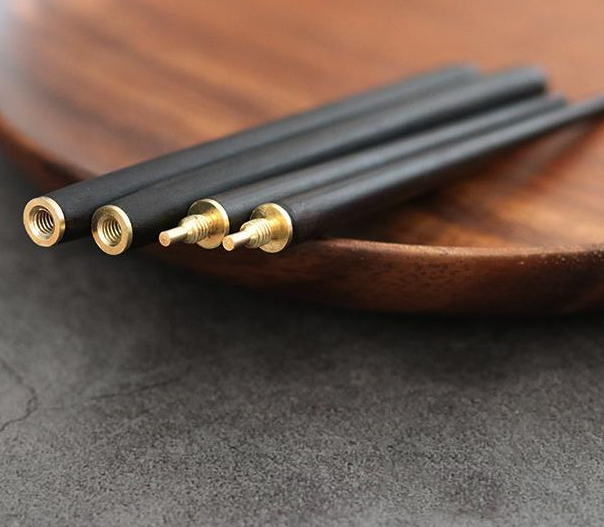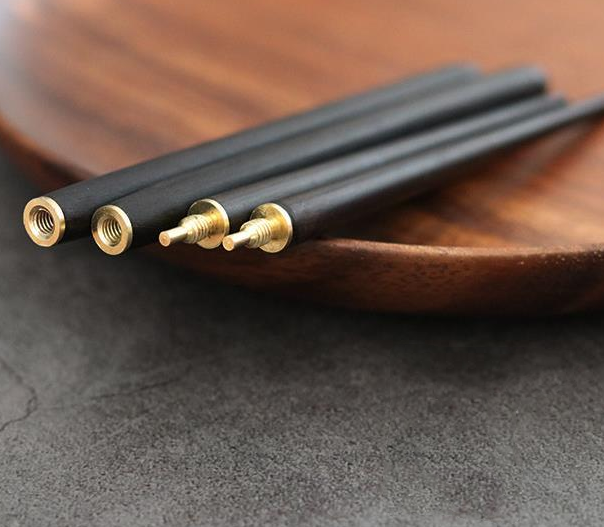Email format error
Email cannot be empty
Email already exists
6-20 characters(letters plus numbers only)
The password is inconsistent
Email format error
Email cannot be empty
Email does not exist
6-20 characters(letters plus numbers only)
The password is inconsistent


When it comes to chopsticks, the choice between steel and wood can be as crucial as the choice of a fine wine with your meal. The debate over steel chopsticks vs. wood is not just about aesthetics or tradition; it involves a mix of practical considerations, cultural significance, and personal preferences. In this blog, we'll explore the merits and drawbacks of each type, helping you make an informed choice for your next meal.
Steel chopsticks have been gaining popularity in recent years, especially among those who appreciate their modern look and durability. But what exactly makes steel chopsticks stand out?
One of the biggest advantages of steel chopsticks is their durability. Unlike wood, which can splinter or degrade over time, steel chopsticks are practically indestructible. They don’t crack, chip, or break, making them a long-term investment for your kitchen. This resilience also means that steel chopsticks require less maintenance; a simple rinse or a run through the dishwasher will keep them clean and ready for the next meal.
Steel chopsticks are non-porous, which makes them highly resistant to bacteria and odors. This feature is especially beneficial if you’re concerned about food hygiene. Unlike wooden chopsticks, which can absorb moisture and become a breeding ground for bacteria if not properly cleaned, steel chopsticks remain sanitary with minimal effort.
Steel chopsticks often come with a sleek, polished appearance that fits well with contemporary kitchen aesthetics. They can be found in a variety of designs, from simple and elegant to intricate patterns. If you’re a fan of modern design, steel chopsticks can be a stylish addition to your dining setup.
One drawback of steel chopsticks is their weight. They can feel heavier in your hand compared to wood, which might affect your comfort and dexterity while eating. Steel chopsticks can also be slippery, making them more challenging to handle for some users.

Wooden chopsticks have been a staple in Asian dining for centuries. Their charm lies in their tradition, texture, and warmth. Here’s why wooden chopsticks continue to be a popular choice:
Wooden chopsticks have deep cultural roots, especially in East Asian countries like China, Japan, and Korea. They are often crafted with care, featuring intricate designs that reflect cultural artistry and craftsmanship. Using wooden chopsticks can connect you to a long history of dining practices and rituals.
One of the most praised aspects of wooden chopsticks is their texture. They offer a natural, non-slip grip that can make it easier to handle food. The wood’s slightly rough surface helps prevent items from slipping, which can be particularly useful when eating delicate or slippery foods like sushi or noodles.
Wooden chopsticks are generally lighter than steel ones, which can make them more comfortable to use for extended periods. They are also easier on your hands and wrists, especially if you’re not accustomed to the weight of metal utensils.
For those concerned about environmental impact, wooden chopsticks are often seen as a more eco-friendly option. Many wooden chopsticks are made from sustainable sources, and they can be biodegradable if properly disposed of. This contrasts with steel chopsticks, which, despite their longevity, require significant energy to produce and are less environmentally friendly when it comes to disposal.
Deciding between steel chopsticks and wooden chopsticks ultimately comes down to personal preference and specific needs. Here’s a quick guide to help you make the right choice:
If you’re looking for something that blends seamlessly with modern kitchen aesthetics and requires minimal maintenance, steel chopsticks might be your best bet. On the other hand, if you prefer traditional dining experiences and appreciate the cultural significance of wooden chopsticks, go for wood.
For long-term use and durability, steel chopsticks take the lead. They won’t crack or break, and they’ll look just as good after years of use. Wooden chopsticks, while charming and traditional, may need to be replaced more often due to wear and tear.
If you prioritize comfort and ease of use, wooden chopsticks are generally more forgiving. Their lightweight nature and grip make them easier to handle for many people. Steel chopsticks, while stylish and durable, may require some getting used to, especially if they are heavier or more slippery.
For ease of cleaning and maintaining high hygiene standards, steel chopsticks are a clear winner. Their non-porous surface means they are less likely to harbor bacteria and odors compared to wooden chopsticks, which require more careful maintenance.
The debate of steel chopsticks vs. wood isn’t just about which is better; it’s about which suits your lifestyle and preferences. Steel chopsticks offer durability, a modern aesthetic, and low maintenance, making them ideal for those who value these qualities. Wooden chopsticks, with their cultural significance, comfort, and eco-friendliness, are perfect for those who appreciate tradition and craftsmanship.
Ultimately, there’s no right or wrong choice—just what feels best in your hands and complements your dining experience. Whether you choose steel or wood, both types of chopsticks bring something unique to the table, enhancing not just the meal but also the cultural experience of eating with chopsticks.